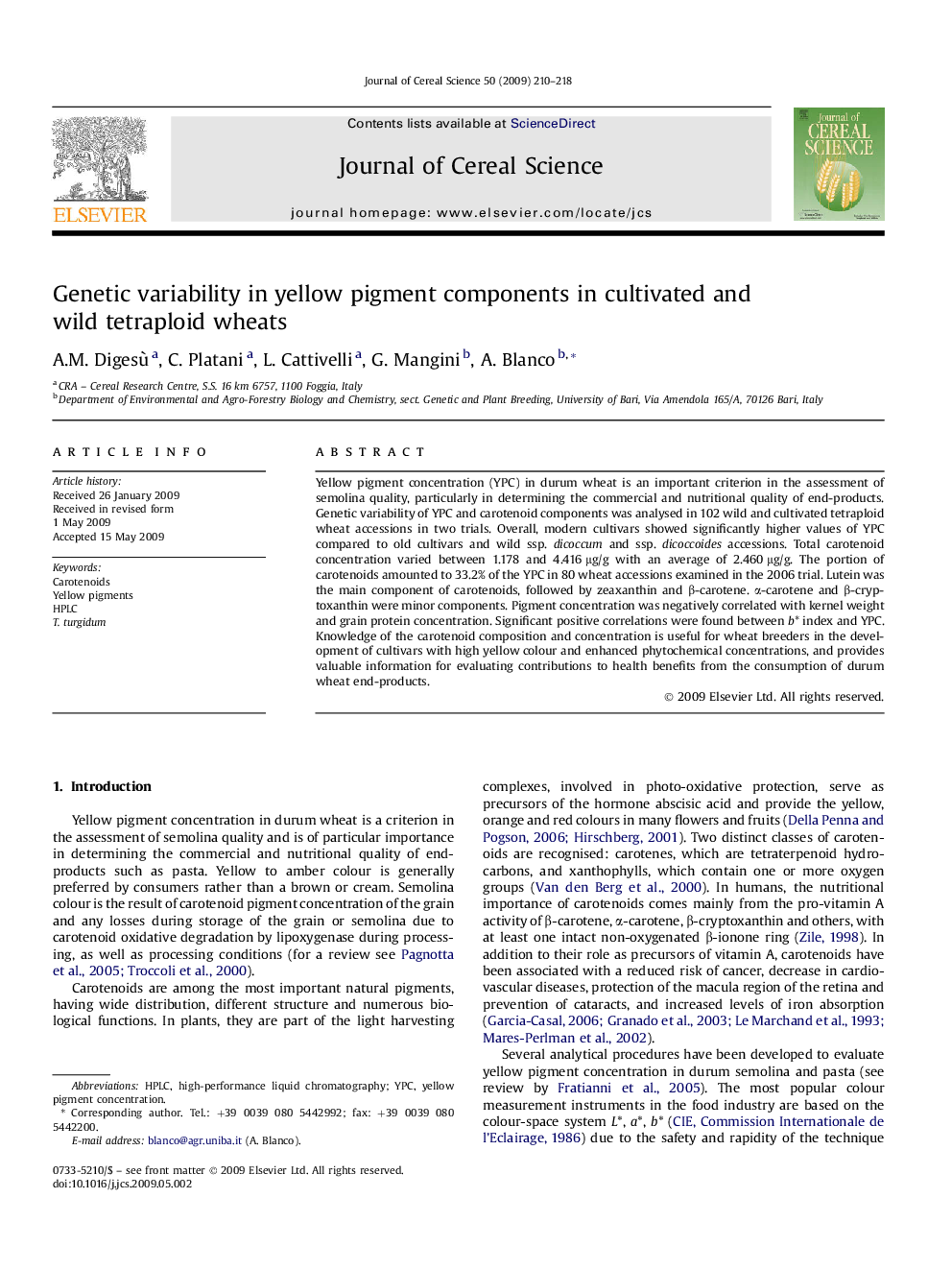| Article ID | Journal | Published Year | Pages | File Type |
|---|---|---|---|---|
| 4516486 | Journal of Cereal Science | 2009 | 9 Pages |
Yellow pigment concentration (YPC) in durum wheat is an important criterion in the assessment of semolina quality, particularly in determining the commercial and nutritional quality of end-products. Genetic variability of YPC and carotenoid components was analysed in 102 wild and cultivated tetraploid wheat accessions in two trials. Overall, modern cultivars showed significantly higher values of YPC compared to old cultivars and wild ssp. dicoccum and ssp. dicoccoides accessions. Total carotenoid concentration varied between 1.178 and 4.416 μg/g with an average of 2.460 μg/g. The portion of carotenoids amounted to 33.2% of the YPC in 80 wheat accessions examined in the 2006 trial. Lutein was the main component of carotenoids, followed by zeaxanthin and β-carotene. α-carotene and β-cryptoxanthin were minor components. Pigment concentration was negatively correlated with kernel weight and grain protein concentration. Significant positive correlations were found between b* index and YPC. Knowledge of the carotenoid composition and concentration is useful for wheat breeders in the development of cultivars with high yellow colour and enhanced phytochemical concentrations, and provides valuable information for evaluating contributions to health benefits from the consumption of durum wheat end-products.
